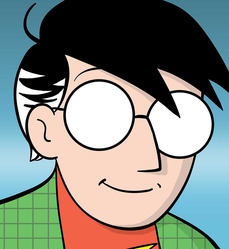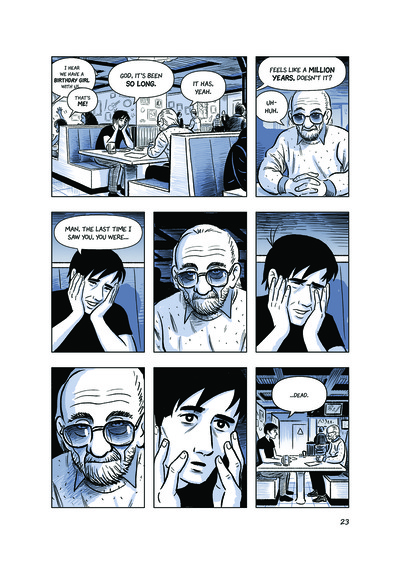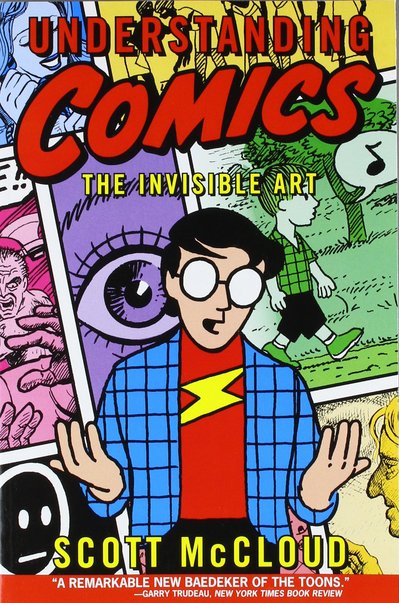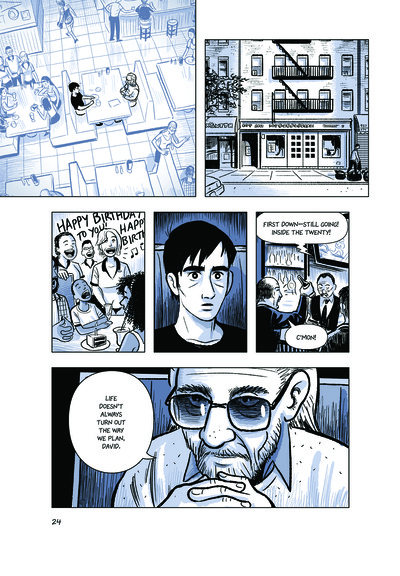“I went through a lot of tissues on this.” Scott McCloud on his 500-Page Masterwork, The Sculptor
Scott McCloud has solidified his position as an elder statesman of the comic book and cartoon medium over the past three decades. Through his trifecta of educational texts — Understanding Comics, Making Comics and Reinventing Comics — the cartoonist and theorist has dissected the major tenants of what comics are, will be and could be. With his new massive graphic novel The Sculptor, McCloud marries that rigorous academia to an evocative epic that explores the metaphysics and emotions of creation. Drafted over five years, this 500-page tome chronicles David, an abrasive, obsessive artist, in his journey to create a masterpiece that will survive his own mortality. David soon makes a faustian pack with Death — in the guise of his amicable Uncle Harry — for the power to construct whatever concept he can visualize with whatever materials he can find. The catch? David only has 200 days to confirm his artistic legacy before departing the mortal plane.
After spending the past 60 months executing this ambitious vision (released this Tuesday by First Second), McCloud has crafted a work that adeptly channels the fragility of growing artists and their fractured relationships. Paste spoke with McCloud via phone to chat about the subjective goal of art, reconnecting with your inner starving artist and the difference between Tommy Wisseau and Stanley Kubrick.
![]()
Paste: The Sculptor is so emotionally raw. Compared to your other work, and even going back to Zot! and The New Adventures of Abraham Lincoln, how was the process different for creating something this vulnerable, as opposed to your educational and more light-hearted material?
Scott McCloud: A lot of the emotional character of the story just comes from the content of the idea. I’m just basically following through from that original idea. It was just this cascading line of dominos. If it was going to be a story about this, and it was going to take these turns, then you needed a character who had this particular emotional tenor to him. He had to be young. He had to be raw. He had to even be a little on the autism spectrum. I can see him having little OCD tics as well. But it just felt right for the story. It wasn’t so much me in that emotional place, as much as me — the calculating narrative overlord — deciding [protagonist David] needed to be in that emotional place, and then I had to put myself in that emotional place.
But all I had to do was put myself back to what I was like at that age. And it wasn’t like I was super obsessive. I guess I still am, but I guess (I was) obsessive and alone, which is different than obsessive and married, which is what I am now.
Paste: You say that so casually, but I don’t think it’s an universal skill to transport yourself back so many years. It’s almost like a method acting trick. How did you get back there?
McCloud: Well, method acting is a really good comparison. One of the things that I’ve been trying really hard to do in recent years is to discover a way of channeling characters on the page. My editor talked a lot about what we called human theater, and how comics haven’t been that great about human theater over the years. Comics don’t always quite get that right: the rhythm of conversations, body language and facial expressions are so important. With this book, that was one of the most important aspects of it for me. And the only way I could do it was like a method actor. I would somehow conjure that feeling in me.
I think maybe it’s just my character. I’m pretty sentimental and earnest. I like my protagonist. I have that condition that Leonard Bernstein’s kids called being irony deficient, which is something I have to overcome as a writer, but at the same time it also gave me a very open channel to emotions. I mean, I went through a lot of tissues on this. Anything sad in the story — anything that might make any reader cry — I was probably crying at some point when I was drawing it. Because I knew I had to produce that emotion in myself to even have a hope of producing it in anyone else. Dustin Hoffman was interviewed about the film that he directed, Quartet, but he said something that I’ve always remembered: actors never wipe away tears, because when they manage to force themselves to cry, they want the audience to see the tears. It’s like I’m not gonna waste this. I’m not gonna wipe this away. But of course, in real life, we always wipe away tears. Even when we’re alone, we always wipe away tears. That’s what real people do.
Paste: Creating the book took you five years. What were the factors that took you the longest to work out?
McCloud: Well it broke down into two parts: there were the layouts and there was the actual finished art. It was two years on the layouts and three years on the finished art. To be more precise, the first year I did the rough. When I say rough, my roughs aren’t all that rough. You can read them like a comic; they look like a comic. They’re all done digitally, but they were hand drawn. All the words were in word balloons. So it was just a little wobbly and rough and sketchy — but if you squint, it looks like a finished comic. So I did that for the whole thing. It took me a little less than a year.
-

-

-

-

-

-

-

-

-

-

-

-

-

-

-

-

-

-

-

-

-

-

-

-

-

-

-

-

-

-

-

-

-

-

-

-

-

-

-

-














































